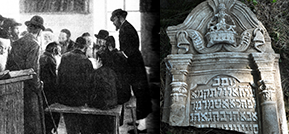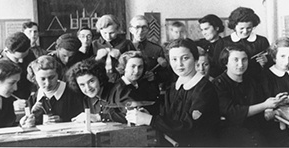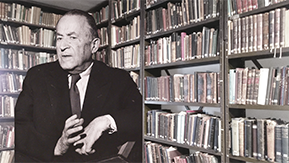Bolekhiv
| Years | State | Province | District |
| Till 1772 | Polish-Lithuanian Commonwealth: Kingdom of Poland | Rus Voivodship (Województwo ruskie) |
Lwów Land (Ziemia lwowska)
|
| 1772-1867 | "Hapsburg Empire", since 1804 - Austrian Empire |
Kingdom of Galicia and Lodomeria (Königreich Galizien und Lodomerien)
|
Dolina powiat |
| 1867-1914 | Austro-Hungarian Monarchy |
Kingdom of Galicia and Lodomeria (Königreich Galizien und Lodomerien)
|
Dolina powiat |
| 1914-1915 | Under Russian occupation | General-Government Galitsiia | |
| 1915-1918 | Austro-Hungarian Monarchy |
Kingdom of Galicia and Lodomeria (Königreich Galizien und Lodomerien)
|
Dolina powiat |
| 1918 - May 1919 | West-Ukrainian People's Republic | ||
| May 1919 - September 1939 | Republic of Poland | Stanislawów wojewódstwo | Dolina powiat |
| September 1939 - June 1941 | USSR: Ukrainian Soviet Socialist Republic |
Stanislav oblast' |
|
| June 1941 - July 1944 | Under German occupation:
General Government (Das Generalgouvernement für die besetzten polnischen Gebiete)
|
Distrikt Galizien | |
| 1944-91 | USSR: Ukrainian Soviet Socialist Republic | Stanislavov (Stanislaviv) oblast'; since 1962 renamed Ivano-Frankovsk (Ivano-Frankivs'k) oblast' | Bolekhiv rajon |
| Since 1964: Dolina rajon | |||
| Since 1991 | Republic of Ukraine | Ivano-Frankivs'k oblast' | Bolekhiv mis'ka rada [municipality] (from 1993) |
| Year | Total | Jews | Percentage of Jews |
| 1765 | - | ca. 1,300 | - |
| 1859 | 3,704 | 2,700 | 72.8% |
| 1870 | ca. 4,000 | 2,900 | 72.5% |
| 1890 | 4,237 | 3,323 | 78.4% |
| 1910 | 3,958 | 3,085 | 77.9% |
| 1921 | 3,150 | 2,433 | 77.2% |
| 1931 | ? | 2,986 | |
| Early 1990s | 2 families | ||
| 2001 | 11,300 | 0 | - |
For photographs see Gallery section.
Bolechow is a town on the banks of the Sukil River (a tributary of the Dniester), at the foot of the Carpathian Mountains, about 70 km west from Ivano-Frankivsk and about 17 km north-west from Dolina.
Bolekhiv was a relatively large city, established at the beginning of the 17th century, which served as an important center of social and economic life in the Dolina region. Jews inhabited the city from its inception, and during the second half of the 19th century comprised about 75% of its population (3,323 out of 4,237 inhabitants in 1890). Among the Jewish inhabitants of Bolekhiv were those involved in major trade and industry (particularly tanning), scholars and famous rabbis. Jews played an extremely important role in the city’s economic and public life, and in 1874 Israel Hauptman, the Jewish owner of the city’s tanning factory, was elected mayor. One of the most notable figures in Bolechów’s Jewish community was the wine trader and public figure Dov Ber Birkenthal (1723-1805), the author of a memoir which serves as an important source of data regarding Jewish life in the Polish-Lithuanian kingdom during its final years. The Jewish Enlightenment and processes of modernization reached Bolechów in the 19th century, finding expression in the activities of a local chapter of the Enlightenment movement, which managed to take over communal leadership, and in the establishment of the progressive Jewish school in the city in the 1850s. Alongside these developments, the majority of the Jewish population of Bolekhiv continued its traditional lifestyle and was even influenced by the spread of Hasidism. In the city center, near the marketplace, where Jewish life was centered, a large fortress-like synagogue was built at the beginning of the 19th century; near it operated several halls of study and Hasidickloizes.
Following the killing of all of Bolekhiv’s Jews by the Nazis, not many testimonies to the formerly vibrant Jewish life of the city remained. The large synagogue served as a worker’s club and the old cemetery was targeted by acts of vandalism by local inhabitants. Only recently have various Jewish organizations initiated the fencing in of the cemetery and the refurbishing of the synagogue.
פריטים רלוונטיים לקהילה
| כותרת | סוג הפריט | שנה |
|---|---|---|
| "Arkusze ewidencyjne" i wykazy Zarządów stowarz... | אינדקס מהארכיון המרכזי לתולדות העם היהודי | 1930 |
| "Arkusze ewidencyjne" i wykazy Zarządów stowarz... | אינדקס מהארכיון המרכזי לתולדות העם היהודי | 1930 |
| "Arkusze ewidencyjne" stowarzyszeń żydowskich w... | אינדקס מהארכיון המרכזי לתולדות העם היהודי | 1924 |
| (Yehuda) Zvi Kepler | מאגר שמות | עד 1928 |
| ... | מאגר שמות | עד 1615 |
| ...David Son of Meir | מאגר שמות | עד 1801 |
| 1. Sprawozdania, listy rabinów galicyjskich i g... | אינדקס מהארכיון המרכזי לתולדות העם היהודי | 1907 |
| 1. Sprawozdania, protokoły, korespondencja i in... | אינדקס מהארכיון המרכזי לתולדות העם היהודי | |
| 1.Protokoły, sprawozdania, korespondencja i inn... | אינדקס מהארכיון המרכזי לתולדות העם היהודי | 1934 |
| A water mill | מבנים |






